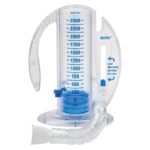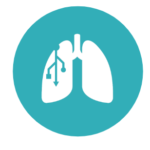The Problem

AirLife – Incentivized Spirometer
Currently, 235 million people are diagnosed with asthma around the world. Many other respiratory diseases, such as chronic obstructive pulmonary disease (COPD), in conjunction with asthma, are often accompanied with the spirometer as a way to strengthen one’s respiratory system to combat these diseases.
The spirometer is a small mechanical respiratory device as shown to the left. Patients are tasked to breathe into the spirometer, exhaling as much volume as they can to move the “ball” up to a certain tidal volume. As one can imagine, this task is extremely strenuous and cumbersome. Furthermore, older patients and patients with especially weak lungs will find this task even more difficult to comply with.

There has been developments to the traditional incentivized spirometer to help patients comply and be engaged with their recommended therapy. This eventually led to the integration of visual stimulants, such as video games, in hopes of increasing patient compliance. However, a recent journal published in Respiratory Care contained staggering numbers – 86% of respiratory therapists and nurses agreed that patient adherence to therapy is poor while 95.4% of the same group agreed that therapy needs to be improved.

Furthermore, our group has had conversations with respiratory therapists from the UC Irvine Douglas Hospital. From our meeting, we have learned that current therapy is as follows:
- Therapist spends 30 minutes – 1 hour with patient to teach them how to use the spirometer with recommended sessions per hour.
- Bed-side nurses come in once in a while to check up on the patient and would possibly check up their volume measurements.
It was clear that there are large limitations in the current technology. First, there is no quantifiable cloud data to collect patient exhalation and trends. Second, therapies are currently utilizing the traditional spirometer. As mentioned, spirometers are painful and difficult to use. It is hard to imagine anyone wanting to utilize such a device. With these reasons, it is imperative that a new medical device would have to be developed to counteract these limitations.
Our company, SPIRO, is here to change that. We are proposing a novel, wearable respiratory therapy device to aid in patient compliance while providing therapists and nurses patient data. With our device, patients will find themselves adhering to their therapy completely while providing clear trends to their providers.